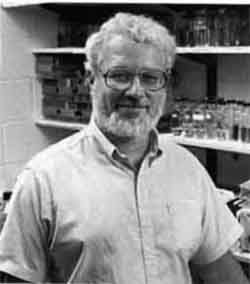 In 2009 renowned scientist Malcolm Casadaban (seen right), a plague researcher at the University of Chicago, died. It wasn’t until five days after the fact that it was discovered that Dr. Casadaban was killed by the microscopic strain of plague that he had been working with.
In 2009 renowned scientist Malcolm Casadaban (seen right), a plague researcher at the University of Chicago, died. It wasn’t until five days after the fact that it was discovered that Dr. Casadaban was killed by the microscopic strain of plague that he had been working with.
That strain was yersinia pestis. While the name may not surprise you, you’ve probably heard or read about some of its past work in history class around the time you reached the middle of the fourteenth century. The fact that a plague researcher was killed by the plague, while sad, is not the strange part. The strange part is the circumstances that led to his demise.
The strains of yersinia pestis that Casadaban was working with were weakened. Specifically, they lacked the iron needed to be fully effective as dangerous, death bringing bacteria. It’s implied that with a person who has a “normal” physiology, the strains in the lab would not have been particularly dangerous. So how did this strain kill Dr. Casabadan? As it turns out, he had hemochromatosis.
“Hemochromatosis? What’s that?” Well, apart from being the most badassical (Not a word. – JW) Scrabble word of all time, hemochromatosis is a build-up of iron. In fact, it’s often referred to as “iron overload.” It’s believed that when the strains of yersinia pestis reached Casabadan’s blood stream, it was able to essentially “feast” on his iron, at which time it became full-on plague.
The fact that he had hemochromatisis is the missing link in figuring out how these weakened, lab-controlled strains ultimately killed this man. It works to shine a light on the fact that, when presented with a seemingly safe environment, even the smartest and brightest of us are willing to forgo some of the basic safety precautions (like rubber gloves) for the sake of convenience. This also serves as a reminder that, in the words of Dr. Malcolm, “life finds a way.”
Link
 Gearfuse Technology, Science, Culture & More
Gearfuse Technology, Science, Culture & More

